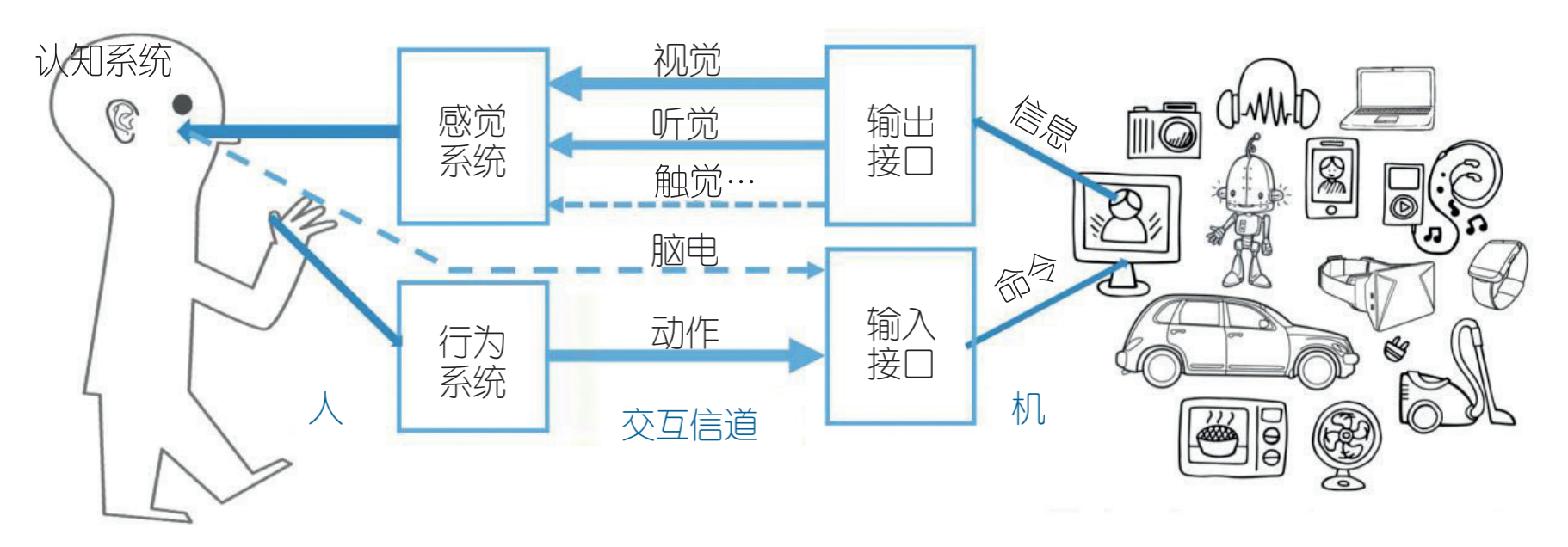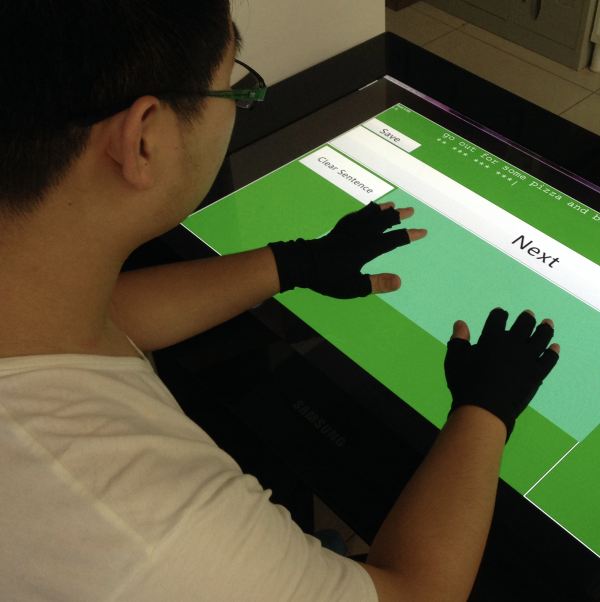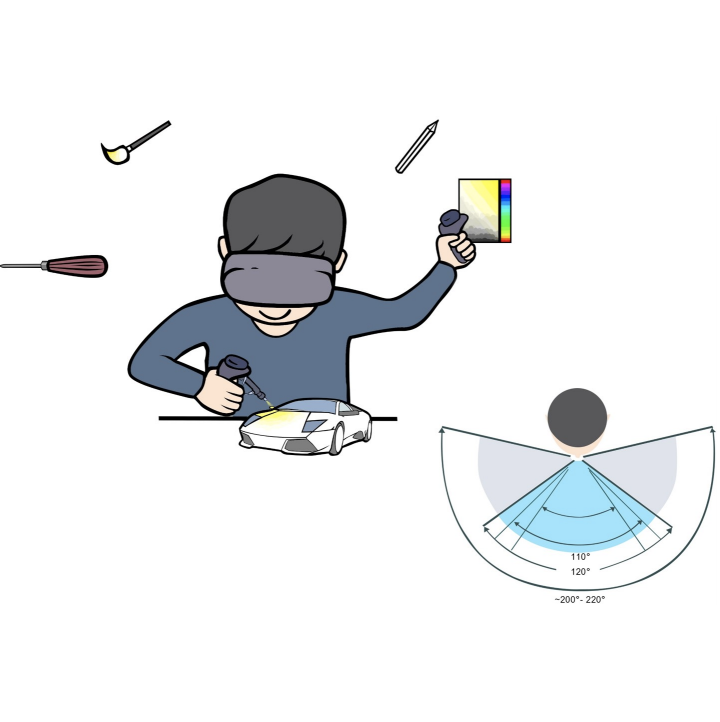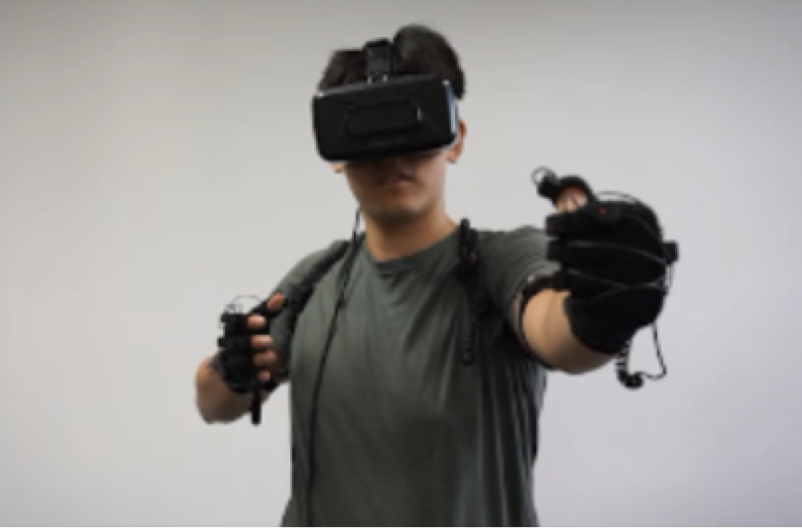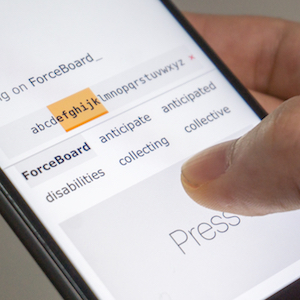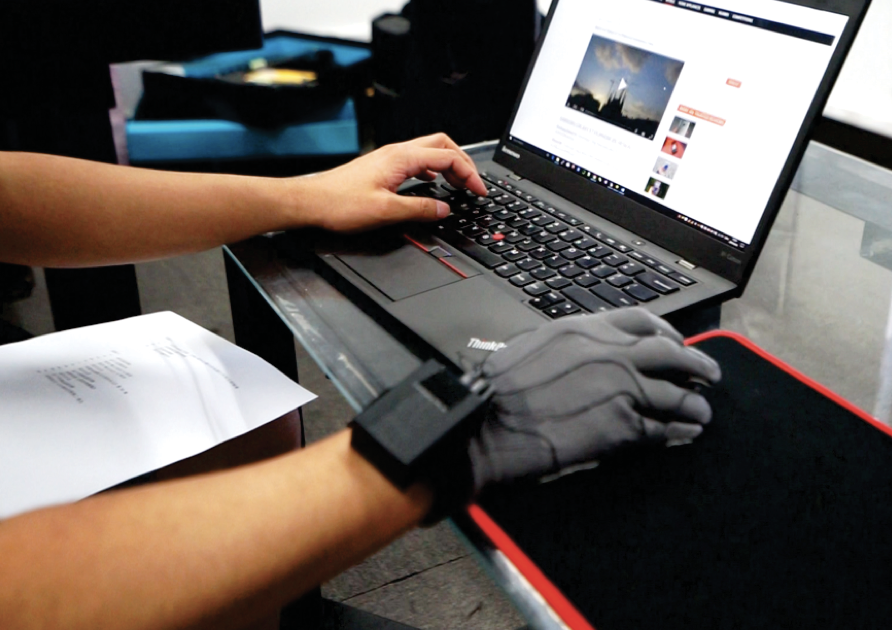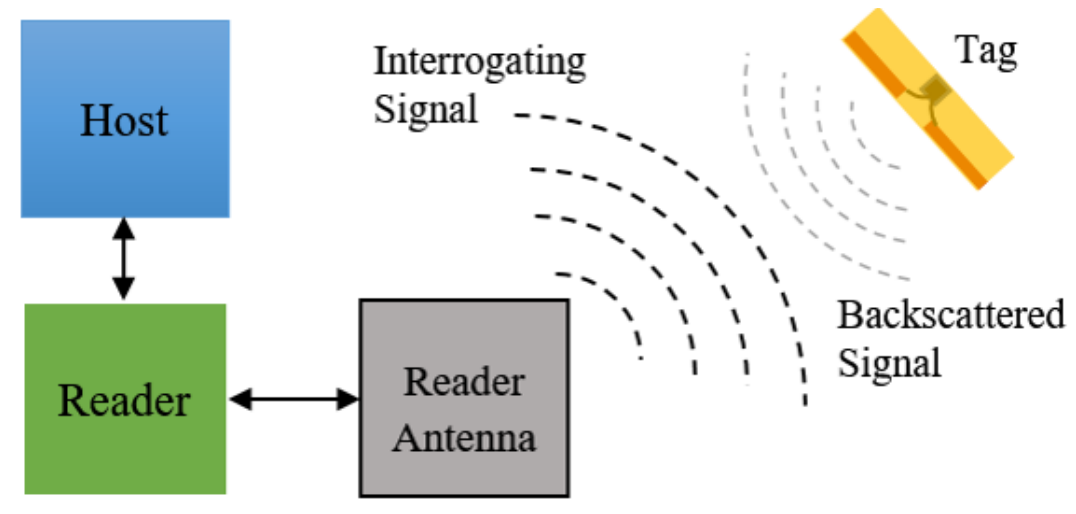论文成果 / Publications
2018
CCCF 2018|自然人机交互
Abstract
人机交互是人与计算机之间为完成某项任务所进行的信息交换过程。计算机形态和使用情境(context)日益复杂多样,交互技术已经成为终端和应用创新的核心竞争力,自然交互是发展趋势。我们希望,人们与手持设备、家居设备、穿戴设备、机器人、无人车,在很多场景中以更自然的模态(比如用语音,用语义丰富的手势,甚至是我们日常的行为)发生互动,人们能获得可理解性与感受效果俱佳的信息反馈。所谓的自然,是在信息呈现和交互表达上,最大程度地符合人对现实世界已有的认知,信道充分,并能降低甚至无须学习成本,而在表达上,还体现在人不需要很精准的表达,可以是某种模糊的表达和传达的方式,而机器端能够给我们准确的理解和精准的服务。
CCCF2018|自然文本输入中的动作建模
Abstract
人机界面是人与计算机之间传递、交换信息的桥梁。几十年来,人机界面的发展越来越强调交互的自然性,即用户的交互行为与其生理和认知的习惯相吻合。人机交互的方式经历了命令行、图形用户界面、 触摸交互和三维空中交互的演变。其结果是,交互的自然性逐渐提高,但由于交互接口尺寸的限制和触觉等反馈信道受限,导致交互信号的精度和交互效率逐渐降低。这种自然性和高效性之间的制约关系,成为了人机交互研究中的难题,如何在两者之间取得兼顾和平衡,是具有重要理论价值和实践意义的研究问题。 文本输入是指人通过人机界面向计算机输入文本信息的过程,是最基本的人机交互任务之一。在日常生活中,历史最为悠久和广为接受的文本输入方式是利用键盘。传统的键盘包括物理键盘和较大尺寸的软键盘,用户经过一段时间的练习后,基本上可以实现无错的文本输入。然而,在可穿戴设备、虚拟 / 增强现实等新一 代自然交互场景中,用户往往面临着交互接口尺寸极小(智能手表)、缺乏触觉反馈(空中交互)等挑战, 这使得用户难以保证输入的准确性,输入信号的信噪比较低。此时,传统的纠错能力弱的文本输入技术的输入正确率显著下降,最终导致其无法完成文本输入任务,或者在输入过程中导致用户紧张疲劳,输入效率低,输入体验差。
TOAST: Ten-Finger Eyes-Free Typing on Touchable Surfaces
Abstract
Touch typing on flat surfaces (e.g. interactive tabletop) is challenging due to lack of tactile feedback and hand drifting. In this paper, we present TOAST, an eyes-free keyboard technique for enabling efficient touch typing on touch-sensitive surfaces.We first formalized the problem of keyboard parameter (e.g. location and size) estimation based on users’ typing data.
Eyes-Free Target Acquisition in Interaction Space around the Body for Virtual Reality
Abstract
Eyes-free target acquisition is a basic and important human ability to interact with the surrounding physical world, relying on the sense of space and proprioception. In this research, we leverage this ability to improve interaction in virtual reality (VR), by allowing users to acquire a virtual object without looking at it. We expect this eyes-free approach can effectively reduce head movements and focus changes, so as to speed up the interaction and alleviate fatigue and VR sickness.
VirtualGrasp: Leveraging Experience of Interacting with Physical Objects to Facilitate Digital Object Retrieval
Abstract
We propose VirtualGrasp, a novel gestural approach to retrieve virtual objects in virtual reality. Using VirtualGrasp, a user retrieves an object by performing a barehanded gesture as if grasping its physical counterpart. The object-gesture mapping under this metaphor is of high intuitiveness, which enables users to easily discover, remember the gestures to retrieve the objects.
ForceBoard: Subtle Text Entry Leveraging Pressure
Abstract
We present ForceBoard, a pressure-based input technique that enables text entry by subtle finger motion. To enter text, users apply pressure to control a multi-letter-wide sliding cursor on a one-dimensional keyboard with alphabetical ordering, and confirm the selection with a quick release. We examined the error model of pressure control for successive and error-tolerant input, which was incorporated into a Bayesian algorithm to infer user input.
中国科学 : 信息科学2018|普适计算环境中用户意图推理的Bayes方法
Abstract
本文阐述了通过 Bayes 方法来预测用户交互意图的建模方法过程和推理过程. 在自然交互界面上, 用户不再是严格地通过离散明确的交互操作完成交互, 而是通过连续、非确定的多模态数据表达交互意图. 在解释用户的交互意图时, 既可以使用 “黑盒子” 的机器学习方法, 也可以利用 “白盒子” 的基于用户行为建模的方法. 后者中的用户建模, 其本质是通过计算的方法来刻画用户的行为能力, 对于理解用户意图和探索自然交互的计算原理具有重要的科学意义. 文章回顾了近年来人机交互研究中主要采用的智能算法, 向读者厘清不同方法之间的差别, 并通过我们实验室的具体研究工作展示用户建模的方法和Bayes推理的建模方法过程和推理过程.
2017
TouchPower: Interaction-based Power Transfer for Power-as-needed Devices
Abstract
The trend toward ubiquitous deployment of electronic devices demands novel low maintenance power schemes to decrease the burden of maintaining such a large number of devices. In this paper, we propose Interaction-based Power Transfer (IPT): a novel power scheme for power-as-needed devices (i.e., devices that only require power during interaction).
BitID: Easily Add Battery-Free Wireless Sensors to Everyday Objects
Abstract
Radio-Frequency Identification (RFID)systems are becoming increasingly used within smart environments. In this paper, we propose BitID, a passive Ultra-High Frequency (UHF)RFID based sensing technique that can easily be made using off-the-shelf tags. BitID can be added to everyday objects to enable sensing and control capabilities. With a simple shorting mechanism, BitID is able to differentiate between two states of the object to which it is attached(for example, whether a door is open or closed). We explain the working principle of BitID,and demonstrate how to build and apply it to target objects. We also show that by using a three-layered system architecture,BitID can be used for various applications, including event detection, energy monitoring, fitness tracking, human behavior tracking and control.
